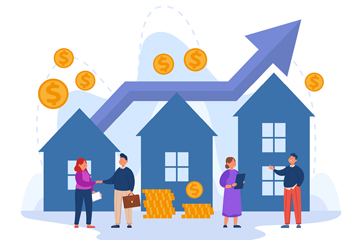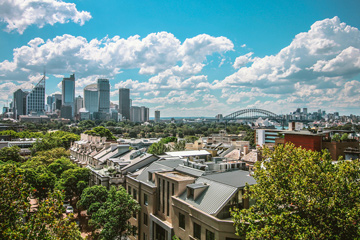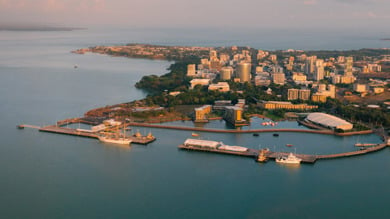
The house vs unit price gap
The trend is clear – the gap between the price of houses and units is widening. But this has not always been the case.
The house vs unit price gap
House and unit price growth started to diverge in late 2021. In September 2021, the national median house price was $570,000, 9.6% higher than the median unit price of $520,000. But fast forward to May 2023 and the typical house costs $725,000, which is 30% higher than the price of a typical unit.
So why have houses grown more than units?
A large driver of the increase was the onset of the pandemic.
The closing of the border reduced the number of overseas students and workers and this had a detrimental effect on the inner-city unit market. Many units were vacated by tenants as they went back overseas and investors were left trying to sell up. The oversupply of units reduced demand, and subsequently prices.

Picture: FreePic
At the same time, the shift to ‘work from home’ drove property seekers to look for houses with more room for a study and a bigger outdoor space. This increased competition in the market, driving up house prices.
The record-low interest rates at the time also made borrowing more money cheaper. This allowed potential unit-buyers the ability to buy a house instead – leading more people to compete for the same properties, further pushing up prices.
And government incentives, such as the HomeBuilder scheme didn’t help unit prices either, as they primarily incentivised housing construction and renovations.
Where have house and unit prices widened the most?
Greater Sydney has the largest median house and unit prices gap at 74.5%. At the start of the pandemic, it was only 29.1%. Sydney’s inner-city unit market suffered from the initial lockdown, driving down unit prices. At the same time, the increased demand for houses (particularly in blue-chip areas) sent prices skyrocketing.
The gap between houses and unit prices in Hobart has mostly held steady over the past five years, and this is due to the significant increase in house and unit medians driven by the housing shortage. Five years ago, there was a 27% difference between the two medians; now, it is 30%.
The high demand for houses in regional Victoria during the pandemic drove a gap of 41.6% between the house and unit median price. In contrast, the demand for both houses and units in regional Queensland has reduced the gap between the median prices.
Land is a scare commodity
Another factor that impacts the price of houses more than units, is the availability of land in inner-city areas compared to regional areas.
As land is a limited resource, especially in desirable areas such as Sydney, its scarcity contributes to higher house prices.

Picture: Pexels
An empty plot of land in the cities is more likely to be used to build an apartment block, maximising the return on investment for the developer rather than just one house. And, as time goes by, available land will decrease pushing house prices up even further.
The scarcity of land and the ongoing desirability of space suggests the gap between the price of houses and units is likely to keep increasing.
This article was originally published on realestate.com.au ‘What’s behind the growing gap between house and unit prices?’


